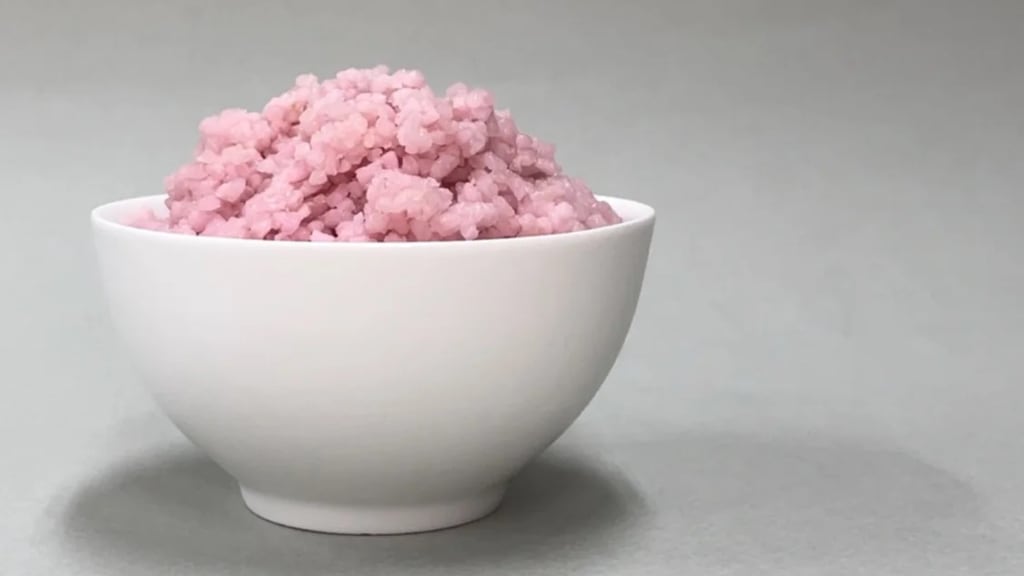Content warning
This story may contain sensitive material or discuss topics that some readers may find distressing. Reader discretion is advised. The views and opinions expressed in this story are those of the author and do not necessarily reflect the official policy or position of Vocal.
South Korean researchers develop beef-infused rice? 🌾
South Korean researchers develop beef-infused rice 🌾

A team of South Korean researchers has developed a new kind of hybrid rice, grown in a lab with cow muscle and fat cells inside the rice grains.
According to the researchers, the pink rice could provide a cheaper, more environmentally sustainable source of protein with a far smaller carbon footprint than beef.
Imagine obtaining all the nutrients we need from cell-cultured protein rice,” primary author Sohyeon Park said in a news release on Wednesday, when the study was published in the journal Matter. “Rice already has a high nutrient level, but adding cells from livestock can further boost it.”
This is how they do it. They first cover the rice in fish gelatin to help the meat cells adhere better. They next introduce cow muscle and fat stem cells into rice grains, which are cultured in a petri dish.
Animals have microscopic “biological scaffolds” that help cells grow to form tissue and organs, and rice grains have a porous, organized structure that mimic this scaffolding, as well as molecules that further nourish these cells, the study said.
The meat cells then grow on the surface of the rice 🌾 rain and inside the grain itself. After about 9 to 11 days, you get the final product — which the study describes as “reminiscent of microbeef sushi and has a different texture, nutritional profile, and flavor than traditional rice grains.”
The beef rice is firmer and more brittle than the typically sticky, soft texture of regular rice — and is higher in protein and fat, the study found. Scientists steamed the rice to analyze it, finding that rice with higher muscle content smelled more like beef and almonds, while rice with higher fat content smelled like cream or coconut oil.
A novel food ingredient that can overcome humanity’s food crisis has been created,” the study declared, adding that new solutions were critical in overcoming “rising health concerns, infectious disease risks, climate change, and resource scarcity.”
Speaking to CNN on Thursday, Park said the team had experimented with different types of food products, but previous models weren’t as successful. For instance, they tried to infuse soybeans with animal meat cells using a similar method, but the cellular scaffolding of the soybean is too big, meaning consumers “can’t feel the meat-like texture.”
However, many meat replacement products have struggled to gain traction in the mainstream market and appeal to customers; following an exceptionally successful market debut in 2019, Beyond Meat lost favor with investors and saw its sales fall.
However, a group of Korean researchers claims their product has an advantage: it uses safe, accessible, and affordable materials, making the finished product sustainable to make and easy on the wallet, according to the study.
The beef rice will not be available in restaurants just yet; the team intends to further enhance the procedure so that the cells can grow better in the rice grain and provide greater nutritious value. They also anticipate that this would improve the texture and flavor of the rice, Park stated.
#Food #South Korea. #beef-infused rice
Thanks all ❤️🥰
However, many meat replacement products have struggled to gain traction in the mainstream market and appeal to customers; following an exceptionally successful market debut in 2019, Beyond Meat lost favor with investors and saw its sales fall.
However, a group of Korean researchers claims their product has an advantage: it uses safe, accessible, and affordable materials, making the finished product sustainable to make and easy on the wallet, according to the study.
The beef rice will not be available in restaurants just yet; the team intends to further enhance the procedure so that the cells can grow better in the rice grain and provide greater nutritious value. They also anticipate that this would improve the texture and flavor of the rice, Park stated.
About the Creator
Angel Malaika
hi i am angel malaika🤞 i love to write especially about technology i love to write in class i am 18 yrs old i have failed in school everyone please pray for me and subscribe my account and my posts friends Thank you all for sharing ❤️❣️
Enjoyed the story? Support the Creator.
Subscribe for free to receive all their stories in your feed. You could also pledge your support or give them a one-off tip, letting them know you appreciate their work.






Comments (1)
Interesting to know.